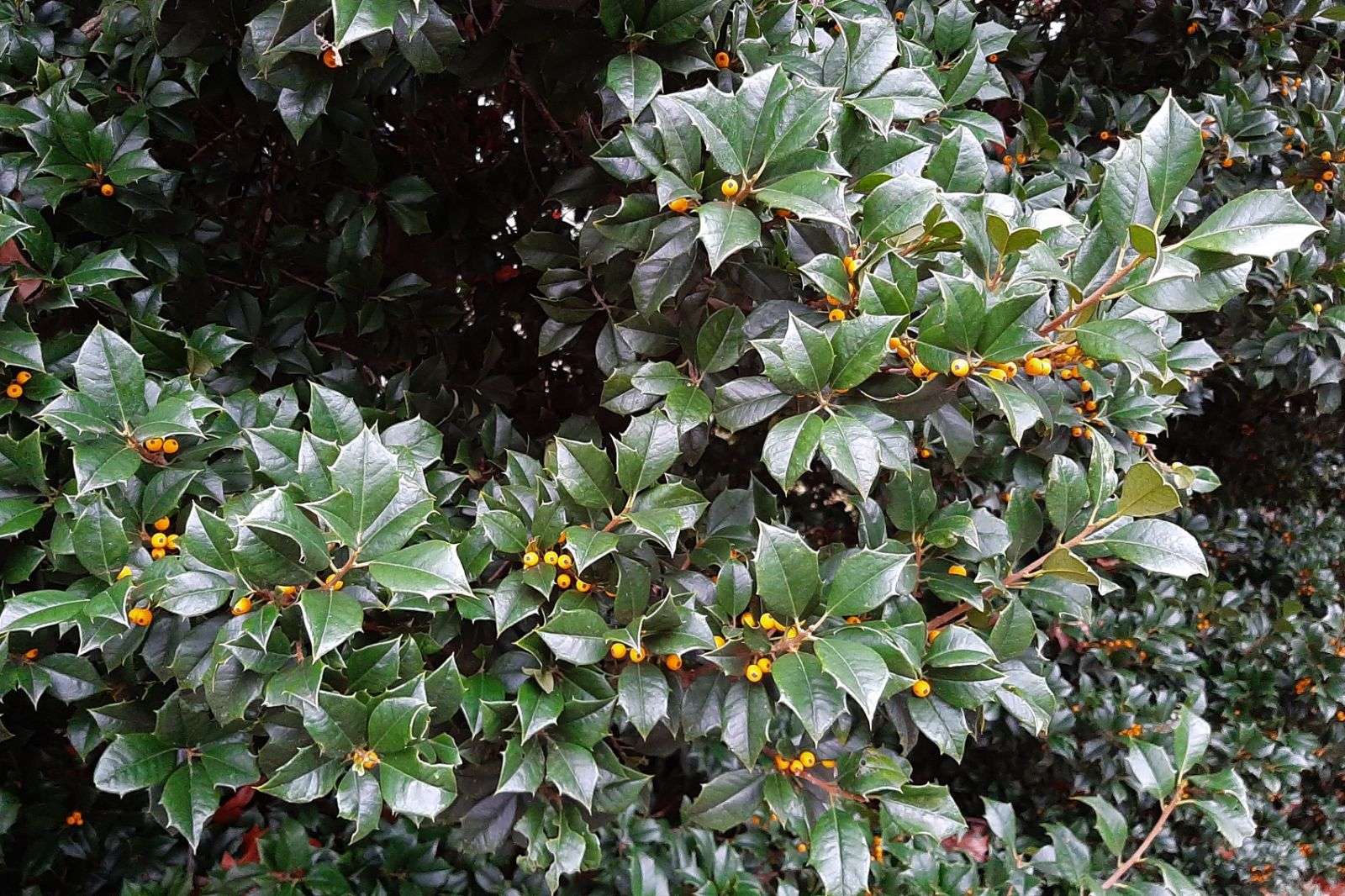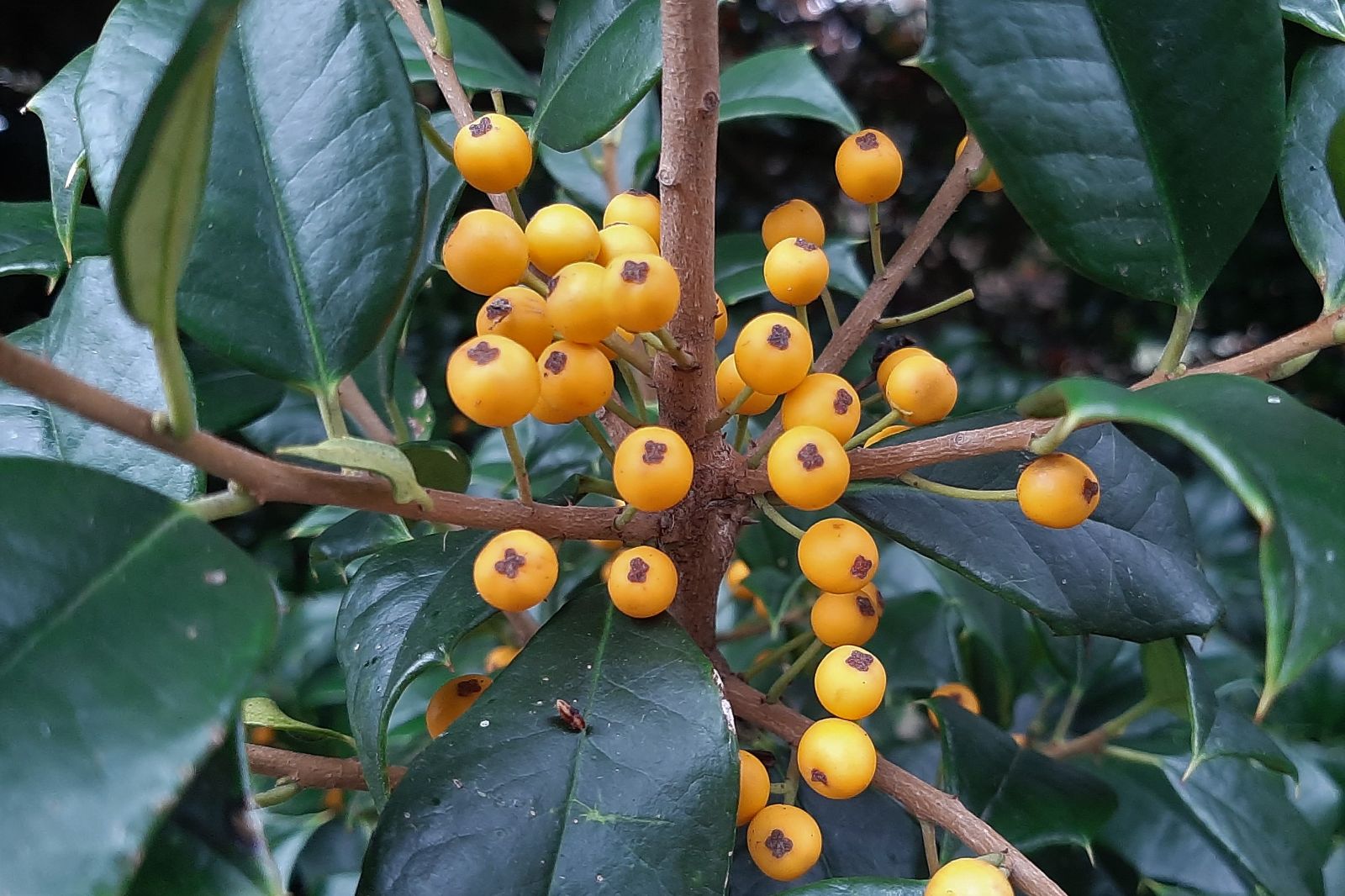Ilex opaca
Credits
Article from Bean's Trees and Shrubs Hardy in the British Isles
Recommended citation
'Ilex opaca' from the website Trees and Shrubs Online (treesandshrubsonline.
Genus
Common Names
- American Holly
Infraspecifics
Other taxa in genus
- Ilex × altaclarensis
- Ilex aquifolium
- Ilex bioritsensis
- Ilex buergeri
- Ilex cassine
- Ilex ciliospinosa
- Ilex corallina
- Ilex cornuta
- Ilex crenata
- Ilex cyrtura
- Ilex decidua
- Ilex dipyrena
- Ilex fargesii
- Ilex forrestii
- Ilex geniculata
- Ilex glabra
- Ilex hayatana
- Ilex hookeri
- Ilex integra
- Ilex intricata
- Ilex kingiana
- Ilex laevigata
- Ilex latifolia
- Ilex linii
- Ilex macrocarpa
- Ilex melanotricha
- Ilex mitis
- Ilex montana
- Ilex nothofagifolia
- Ilex pedunculosa
- Ilex perado
- Ilex pernyi
- Ilex purpurea
- Ilex rotunda
- Ilex rubra
- Ilex rugosa
- Ilex serrata
- Ilex shennongjiaensis
- Ilex spinigera
- Ilex verticillata
- Ilex vomitoria
- Ilex yunnanensis
An evergreen tree sometimes 40 to 50 ft high in the wild, with a trunk 6 to 9 ft in girth, resembling the common holly in habit; young shoots minutely downy. Leaves dull green above, yellow-green beneath, oval, tapered more abruptly at the base than at the spine-tipped apex, 11⁄2 to 31⁄2 in. long, half as wide, the margins armed with broad, spine-tipped teeth, which tend to disappear from the uppermost leaves of adult specimens; stalk grooved, 1⁄4 to 1⁄2 in. long, minutely downy. Male flowers in three- to nine-flowered, slender-stalked cymes; females usually solitary; all small, dull white; calyx-lobes edged with minute hairs. Fruits red, round, 1⁄4 in. diameter, on a stalk about as long.
Native of the eastern and central United States; introduced in 1744. In gardens this species is only likely to be confused with the Himalayan I. dipyrena, which has similarly opaque, evergreen foliage, but that species has longer narrow leaves with shorter stalks, and much shorter-stalked, more congested flower-clusters. The fruit also is larger. I. opaca sometimes bears fruit very freely in this country, and is then ornamental, but it is never so attractive as our common native species. There is a fine specimen of this species at Kew near the south end of the Holly Avenue.
f. xanthocarpa Rehd
Fruits yellow; has been found wild in Massachusetts. Introduced in 1901.In the USA, the American holly is a valued ornamental, and numerous cultivars are in commerce there, scarcely known in Europe. Hybrids between it and I. cassine are also grown, the most noteworthy being ‘East Palatka’, a female with almost entire leaves, and the narrow-leaved Foster hybrids. This cross also occurs in the wild, and its botanical name is I. × attenuata Ashe.


